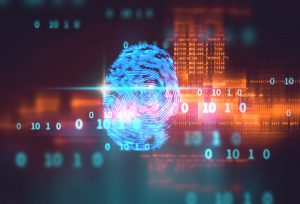
One principle that is critical to the development of new security technologies is the idea of multifactor authentication.
When developing new security technologies, there are a few principles that programmers, engineers, and designers all try to keep in mind. One such principle is the idea of multifactor authentication. You’ve likely already experienced multifactor authentication in some small way, whether you realized it or not. Take for example two-step verification when signing into a secure email account. The first requirement may be punching in a password as-to-be expected, but after that, you may need to put in a code that was texted to your phone or emailed to a separate email account. This all comes in the form of answering security questions—those prompts of what elementary school you went to or what your mother’s maiden name is are actually very basic forms of multifactor authentication. Any instance where you’re asking for multiple forms of identity are examples of multifactor authentication coming into play.
While it’s clear that there’s a special place within the development of security technologies for implementing multifactor authentication protocols, you may not be aware of all of the benefits and what instances are examples of multifactor authentication. Let’s take a closer look at how multifactor authentication can influence the development of new security tech.
The Benefits
Ever hear the phrase “never put all of your eggs in one basket?” Unfortunately, traditional approaches to authenticating identity are doing exactly that. If someone gets ahold of your password or a keycard, that can be it: an account is suddenly compromised, a door is unlocked that leads to theft, or any other number of issues that can come about as the result of a breach of security. By diversifying your means of identity authentication, you’re able to cut down on the risk of any security problems.
Examples of Implementation
The above-mentioned example of email accounts using multifactor authentication is just one possible example. There are also access control systems where you may need to register a fingerprint and also swipe a card. Here at Gatekeeper, our vehicle inspection security systems are developed with multifactor authentication in mind. Our driver camera is capable of authenticating the identity of a driver and occupants of a vehicle while our license plate reader can check license plates to authenticate whether or not they are meant to be where they are.
Vehicle Inspection Security With Gatekeeper
Gatekeeper Security’s suite of intelligent optical technologies provides security personnel with the tool to detect today’s threats. Our systems help those in the energy, transportation, commercial, and government sectors protect their people and their valuables by detecting threats in time to take action. From automatic under vehicle inspection systems, automatic license plate reader systems, to on the move automatic vehicle occupant identifier, we offer full 360-degree vehicle scanning to ensure any threat is found. Throughout 30 countries around the globe, Gatekeeper Security’s technology is trusted to help protect critical infrastructure. Follow us on Facebook and LinkedIn for updates about our technology and company.
